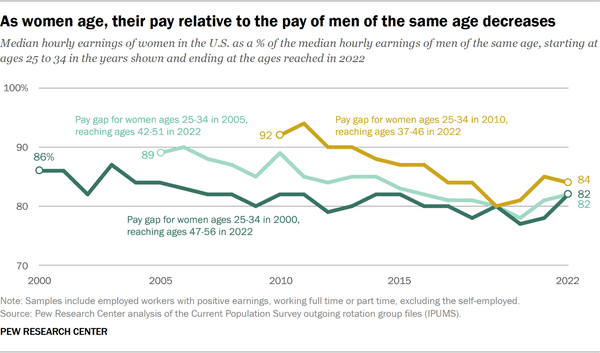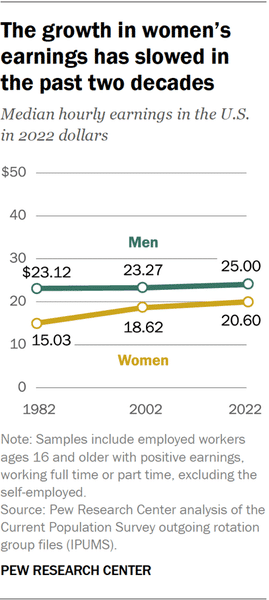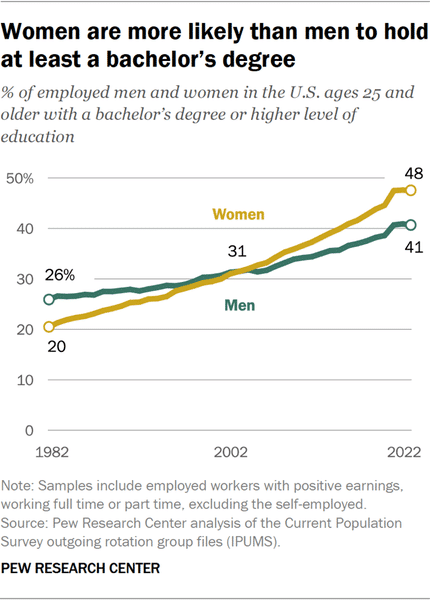The Road Less Traveled

Hi, The Investor’s Podcast Network Community!
Looking for some weekend trivia to share with friends?
✍️ The great American poet, Robert Frost, was born on this day in 1874.
Our quote of the day is derived from his famous poem, The Road Not Taken.
In today’s Sunday edition, we’ll explore the driving factors behind gender inequality, and more, in just 4 minutes to read 📖
Understand the financial markets
in just a few minutes.
Get the daily email that makes understanding the financial markets
easy and enjoyable, for free.
History of positive returns ✔️
Inflation-hedging potential ✔️
Resistance to market volatility ✔️
Land has helped investors preserve wealth for generations, and AcreTrader makes it easy to diversify with farm and timberland assets online — Find out how.
RECOMMENDED READING
From our good friends at the Top Traders Unplugged podcast, check out their Ultimate Guide to the Best Investment Books of All Time, featuring over 300 handpicked titles that are bound to transform your investing journey.
The best part is — it’s absolutely FREE to download right now!
But that’s not all. As a valued member of The Investors Podcast’s community, there’s something a little extra just for you. When you download the guide, you’ll also receive an exclusive bonus as a token of our appreciation.
Grab these incredible resources and watch your investing knowledge soar to new heights:
ZOOMING IN ON GENDER INEQUALITY

A concerning trend
The gender pay gap is a polarizing topic, but we shouldn’t let that distract us from objectively understanding such an important economic reality.
As an ode to Women’s History Month, we’d like to explore the state of gender inequality with a little help from the Pew Research Center.
What to know
The gap in aggregate pay between women and men in the U.S. narrowed from 65 cents for each dollar earned by men in 1982, to 80 cents to the dollar in 2002. Yet, this progress has stalled in the 21st century, with the gap narrowing only two cents in the past two decades.
Pew Research finds that women typically begin their careers “closer to wage parity with men, but lose ground as they age and progress through their work lives.” The researchers attribute this partly to parenthood.

Costs of motherhood
Mothers ages 25 to 44 are less likely to be in the labor force than women of the same age without children, and those who are employed tend to work fewer hours.
But fathers are actually more likely to be in the labor force, on top of working more each week, than their childless male peers. Correspondingly, this dynamic is linked to greater earnings for fathers, a phenomenon that Pew calls the “fatherhood wage premium.”
They add that family needs may shape the type of jobs women and men pursue, contributing to gender segregation across occupations.
How the gap changes over time
Pew finds that the gap widens the most between the ages of 35 and 44. A 2010 study found women aged 25-34 earned about 92% as much as men their age, only to see the gap widen to 84% by 2022 for the same group of women.
The ratio worsens further to 79% for women in the 55 to 64 category. They conclude that the largest extent of pay gap increases coincides with the ages at which women are most likely to have children under 18 at home.
Where parenthood leads some women to “put their careers on hold, whether by choice or necessity,” it has the opposite effect on men.
According to Pew Research, fathers are more likely to hold a job or be looking for one than men without children, and this is true throughout their prime working years (ages 25 to 54).

The role of education
They also note that parenthood affects the hourly earnings of employed women and men in unexpected ways. For example, while employed mothers typically earn less than their female peers with no children, that gap is driven primarily by differences in educational attainment.
Comparing women with similar levels of education reveals that there’s little gap between earnings for working mothers and non-mothers. And women with higher levels of education tend to have fewer or no children at home.
We also know that motherhood impacts women’s potential earnings, as career breaks cause varying degrees of income sacrifices, while some women choose never to re-enter the paid workforce.
It’s difficult to know what a mother’s earnings might have been, but estimates suggest that motherhood may account for most of the current shortfall in the overall earnings potential of women in the Western world.
Despite gains in education in recent years, with 48% of women holding a bachelor’s degree or higher in 2022 compared to 41% for men, the rate at which the pay gap closes has slowed.

Making progress
The educational gains likely failed to contribute meaningfully to narrowing the pay gap because, well, increases in the pay premium that college degrees offer declined for years before stalling in 2010.
Still, more educated women have increased their share of employment in higher-paying occupations related to business, finance, law, computer science, and engineering.
In 1982, women accounted for 26% of managerial occupations, which rose to 40% by 2022. Yet, there’s been no change to the overrepresentation of women in education, health care, and personal care and service jobs — all of which rank among the lowest-paying occupations.
Takeaways
The picture overall is one of progress. Women have, for decades now, been playing an increasingly important role in our labor force, and their educational attainment now exceeds that of men.
To break out of the holding pattern that the gender pay gap has been in since 2002, ranging from 80 to 85 cents to the dollar, Pew Research suggests that changes in cultural norms and workplace flexibility may be necessary to help women balance their careers and family lives.
Dive deeper
If you’re curious to dive deeper into the data and studies, you can read Pew Research’s entire report here.
SEE YOU NEXT TIME!
That’s it for today on We Study Markets!
Enjoy reading this newsletter? Forward it to a friend.









